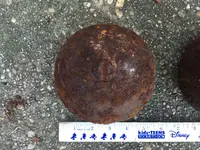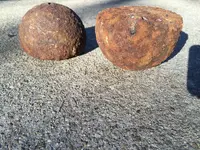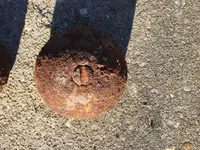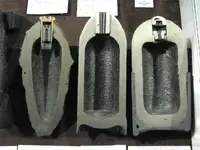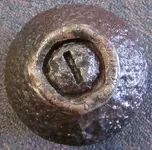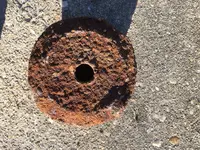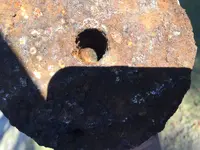In my previous reply to your "Smoothbore shotshell?" question, I should have included the word "smoothbore" in my answer: "I am 100% certain they are not a civil war (or earlier) SMOOTHBORE artillery projectile, nor a part of one."
Because none of the books which show civil war (and earlier) artillery shell fuzes have a slotted flat IRON plug as part of a fuze, I do not believe the plug in these two objects is a fuze.
But, for the sake of learning relic knowlege and reasonable discussion, let's explore any possibility that your find is an artillery projectile, or part of one.
They are much too short-bodied in relation to their diameter to be an intact/complete projectile.
There is a possibility that they are part of a Rifled artillery projectile... specifically, the blown-off nose/front section of an exploded 5.1" or 5.3"-caliber cylindrical shell. There are two ways to test that possibility, which will produce a definite yes-or-no answer.
1 - If the screwdriver-slotted plug is part of a fuze, the rest of the fuze should be in the hole underneath the plug. Run a stiff wire into the hole from the bottom, and mark how far the wire goes into the hole. That will tell you whether or not there's anything in the hole under the plug. (Please make sure the hole isn't just clogged with rust-concreted dirt.) If there's no additional fuze component in the hole under the plug, it's not an artillery projectile.
2 - If the flat bottom of the object is actually the ceiling of a shell's powder-cavity, exposed because the shell's sidewalls blew off when it exploded, there should be breakage scars around the flat bottom's edge of where the shell's sidwalls used to be. (See the photo below to help you visualize what I'm talking about, particularly the round-nosed shell on the right.) If there is no trace of breakage around the edge of the flat bottom of your find, it cannot be the blown-off nose of an exploded artillery shell.
